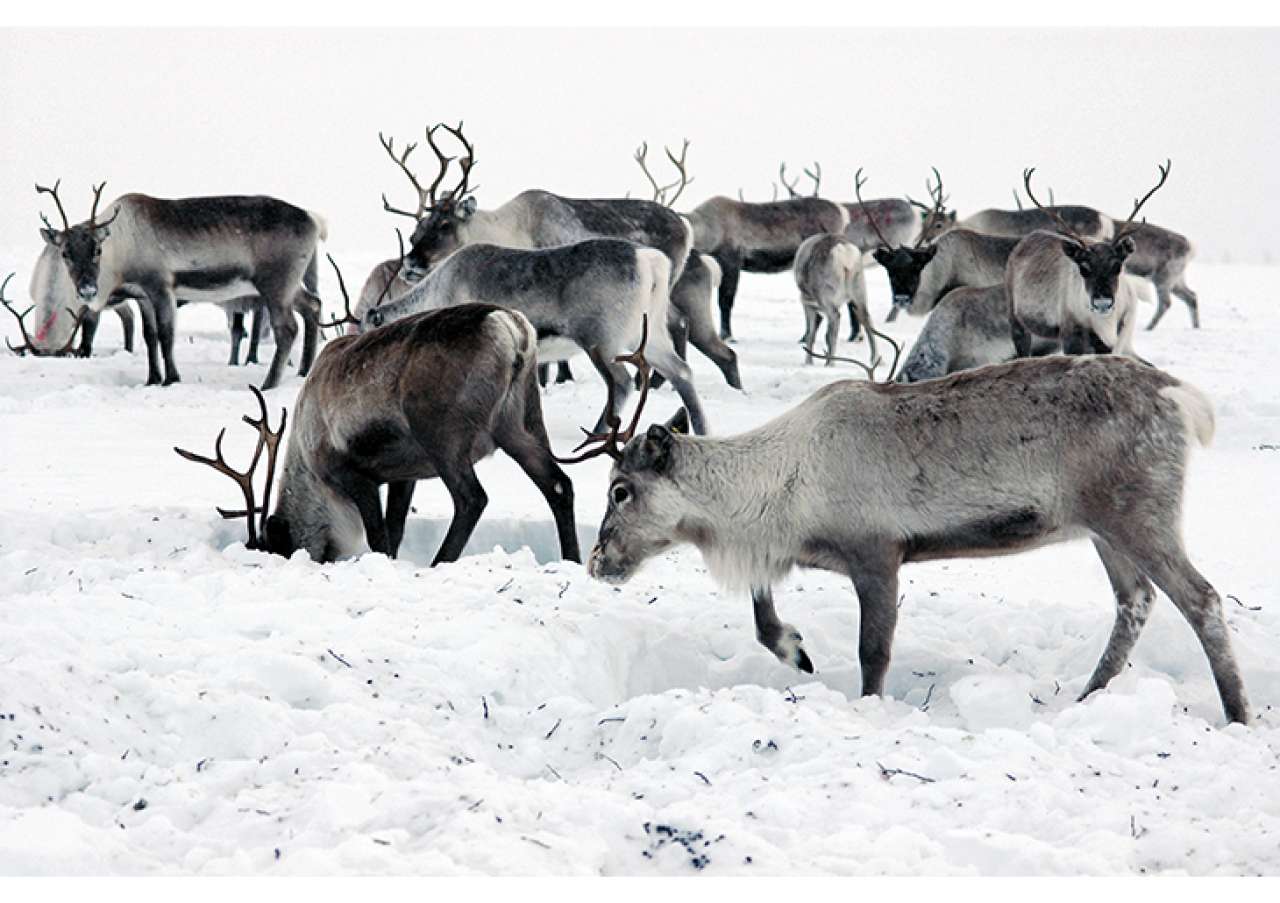Do reindeer cause crop damage in winter?

Photo: Ministry of Agriculture and Food
In some areas, semi-domestic reindeer grazing on cultivated land can lead to major conflicts between the reindeer husbandry and agriculture industries. The disputes tend to centre around who is responsible, and who should pay for any reduction in crop. Thus, the question is: Do reindeer that graze on cultivated land cause loss of crop, and if so, what is the extent of this loss?
Reindeer live outdoors all year round, making use of whatever natural grazing resources they find. In winter, reindeer look for green plants, lichen, cordgrass, heather and shoots. If food is scarce, they may dig down through the snow on cultivated land in search of the green parts of grass that lie on or beneath the surface of the soil.
The reindeer husbandry industry has grazing rights on open rangeland in Sami reindeer grazing areas, but not on cultivated land, although this can be difficult to enforce. Section 28 of the Reindeer Husbandry Act states: "The reindeer shall be kept under supervision to prevent them, as far as possible, from causing damage, roaming outside their lawful grazing area or mixing with other reindeer."
Even if reindeer are chased off cultivated land or moved some distance away, the herd may quickly move back and graze on the infields. Fencing is effective but expensive. NIBIO's researchers have calculated the extent of crop loss caused by reindeer after grazing on cultivated land in the winter and spring 2019 at Dønna. The results did not show any significant reduction in crop due to reindeer during this period.
However, the researchers are cautious about generalising these results. Several studies are needed, over several years and in different locations, to be able to draw firm conclusions about whether reindeer grazing on cultivated land cause loss of crop.
Contacts

Contacts

